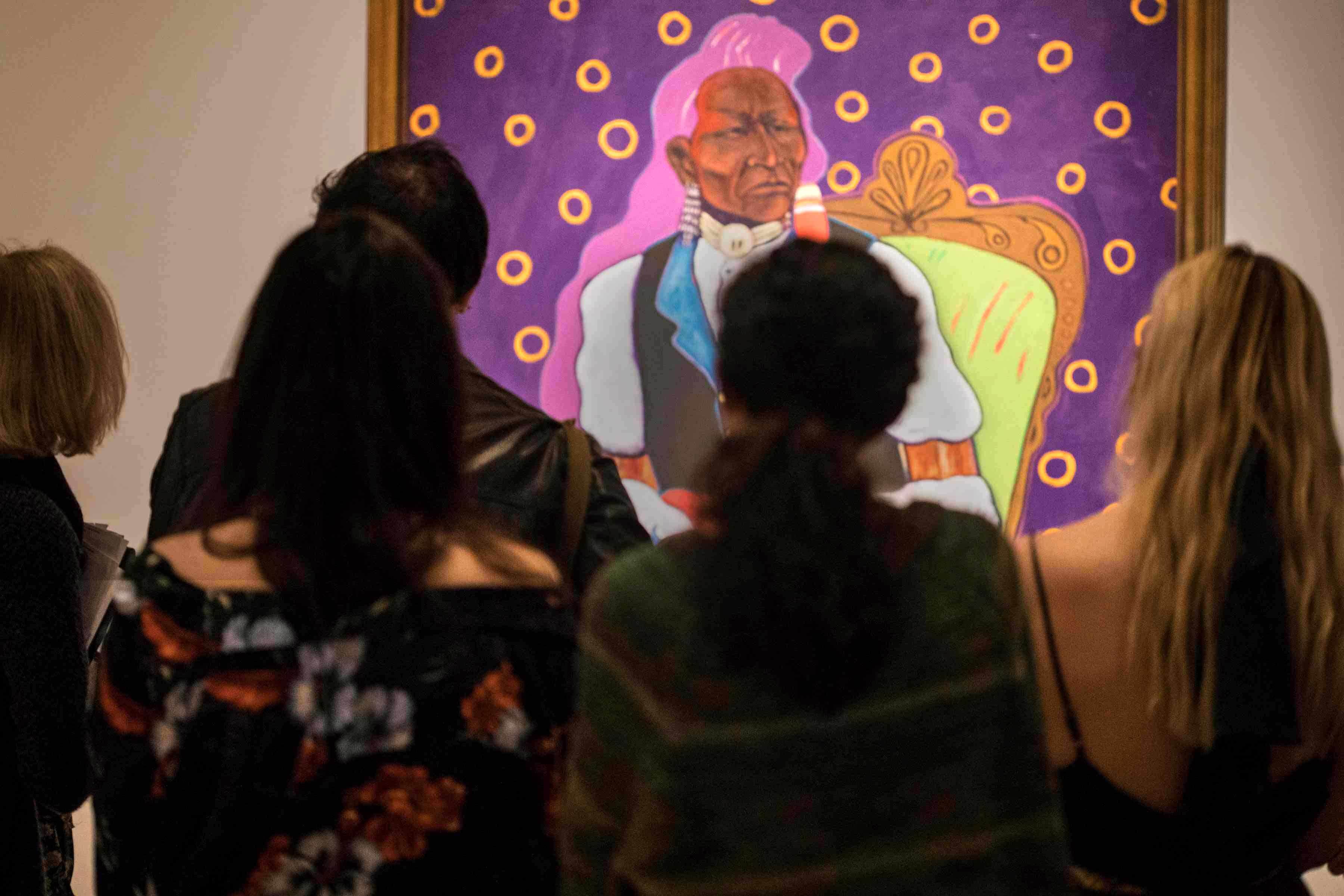PEM’s Neuroscience Initiative has two goals:
Goal #1
Harness existing neuroscience research and generate new findings to inform the design of art experiences in the museum setting.
Goal #2
Observe visitor responses to art to inform our understanding of the neuroscience of aesthetic experience.

The result is the formation of a two-way street between the arts and the sciences through which the inquiries and resources of one discipline can illuminate new questions and findings in the other.
The Neuroscience Initiative at PEM leverages neuroscience in these two ways:
- Drawing on existing findings within the neuroscientific literature to inform the design of various elements of the visitor experience
- Using biometrics to assess the current and potential visitor experience in a series of in-gallery studies
We use both approaches to learn about a range of topics critical to the development of art experiences in a museum setting.

Approach to assessing visitor experience at PEM
For the initiative, we employ a three-phased scientific approach in order to holistically assess the visitor experience.
Phase 1: Research and Hypothesis Formulation Phase
During this phase, the team performs literature reviews, analyzing existing neuroscientific findings to generate hypotheses about how to enhance the design of art experiences at PEM.
For example, existing neuroscience data demonstrate that the goal a person has when looking at an image will greatly impact how they see it. A hypothesis might posit that the content of object labels—which often communicates a “viewing goal”—has the power to impact visitor engagement with the presented artwork.
Phase 2: Implementation Phase
Once a hypothesis is conceived, the team employs a range of interpretation and design elements in the galleries to actualize the hypothesis.
For example, we would act on the aforementioned hypothesis by generating labels containing different kinds of content and “viewing goals” for various works of art within a given exhibition.
Phase 3: Evaluation Phase
In this phase, the team assesses the impact of the hypothesis on the visitor experience using a mixed-methods approach to measure visitor engagement. This approach unites eye- or gaze-tracking, physiological measurements of emotion, and self-report metrics. Importantly, the mixed-methods approach is an iterative process in which we continue to refine our understanding of visitor engagement over time.
For example, we investigate whether visitors spend longer viewing or react more strongly to art that is accompanied by labels bearing one type of viewing goal over others.
Mixed-methods approach to assessing visitor engagement
In assessing visitor engagement, it is important to measure both conscious and unconscious aspects of a visitor’s response to an exhibition. Conscious awareness does not always reflect our unconscious reality. In fact, the majority of our brain function that generates experience occurs on an unconscious level. The following mixed-methods approach to measuring visitor engagement employs techniques that access both conscious and unconscious behavioral and emotional responses.

Mobile eye-tracking
Captures conscious and unconscious responses
New technologies allow us to observe where a visitor attends visually, or where they look. Subjects wear a pair of mobile eye-tracking glasses and the resulting data is captured on a computer in the form of a video. This kind of data is extremely useful in revealing what kinds of design decisions draw visual attention.

Galvanic Skin Response
Captures conscious and unconscious emotional responses
The galvanic skin response (GSR)—also known as electrodermal activity—is a measurement that relates to how much electricity your skin conducts. This electrical conductivity of the skin is governed by the brain and reflects the extent of emotional arousal, or the intensity of an emotional experience. We can track GSR by temporarily applying two electrodes to the skin and measuring the relatively small current that passes between them.

The curve plotted on the below graph reflects the nearly instantaneous changes in GSR (plotted on the y-axis) over time (plotted on the x-axis). You’ll notice several peaks are highlighted in yellow on the curve. Each peak represents an instance of intense emotional experience. By analyzing the number and size of these peaks, we can assess the emotional intensity of a given experience.

Self-Reporting
Captures conscious responses
One way to access the conscious experiences of visitors in PEM’s galleries is simply to ask them. The third piece of our mixed-methods approach to evaluation is self-reporting, which can take the form of an exit survey or interview.




